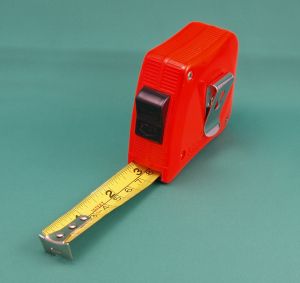 Many businesses share a common problem in negotiating and drafting contracts. Rather than resolving all key issues before they enter into a contract, rather than making clear what each party to the contract is obliged to do, and what each is entitled to receive, they allow serious ambiguities to remain in the terms of their agreement. Often the businesses want to gloss over their differences in order to close the deal. The problem with that approach is that ambiguities involving important issues, if not resolved beforehand, often lead to more serious disputes, including litigation, once the parties execute the contract. A recent case decided in New York by the Appellate Division, First Department, illustrates the problems engendered by this approach.
Many businesses share a common problem in negotiating and drafting contracts. Rather than resolving all key issues before they enter into a contract, rather than making clear what each party to the contract is obliged to do, and what each is entitled to receive, they allow serious ambiguities to remain in the terms of their agreement. Often the businesses want to gloss over their differences in order to close the deal. The problem with that approach is that ambiguities involving important issues, if not resolved beforehand, often lead to more serious disputes, including litigation, once the parties execute the contract. A recent case decided in New York by the Appellate Division, First Department, illustrates the problems engendered by this approach.
Parcside Equity, LLC v. Freedman, 2012 NY Slip Op 05106, Appellate Division First Department, June 26, 2012, involved a Defendant who entered into a contract in which he made an irrevocable offer to sell his life insurance policies to the Plaintiff. The terms and timing of the contract are the key to understanding the dispute. To begin with, there was no straightforward agreement to sell/buy the policies. Instead, the Defendant/Seller offered, in writing, to sell his policies to the Plaintiff/Buyer at a specific price. The Plaintiff/Buyer, however, could purchase the policies, but was not required to do so.
The central issue in the dispute was simple: The Defendant/Seller wanted to sell one of his policies for a higher price than he originally agreed to, and tried to renegotiate the terms of the offered sale, while the Plaintiff/Buyer evidently wanted to pay the lower, original price offered in the contract. This was expressed in two questions, which essentially mean the same thing. The first was how long the Plaintiff/Buyer could take to accept or reject the offer; i.e., to decide whether to purchase the policies. The second was when, if ever, the Defendant/Seller could withdraw his offer, or, in effect, materially change the terms of the proposed sale.
The written contract provided, in relevant part:
“Performance. This Agreement has been executed first by the Seller as an offer to sell the Policy hereunder, which offer shall be open for acceptance by the Purchaser until 5:00 p.m. on October 17, 2008, at which time the offer shall be deemed to be withdrawn if this contract has not been returned to the Purchaser and in the Purchaser’s sole discretion accepted by the Purchaser by that date or any other date selected by the Purchaser.”
That contract language was at the center of the dispute. The Defendant/Seller argued it meant that his offer to sell his life insurance policies to Plaintiff/Buyer could be withdrawn after October 17, 2008. If the court agreed, the Defendant/Seller would be allowed to sell the policies for a higher price than he originally agreed to, either by renegotiating with the Plaintiff/Buyer or by finding another purchaser. The Plaintiff/Buyer argued that the same contract language meant the Defendant/Seller’s offer to sell was irrevocable; i.e., it could not be withdrawn.
The appellate court interpreted the contract language in favor of the Plaintiff/Buyer. It held that the contract language clearly gave the Plaintiff/Buyer the right to purchase the life insurance policies at the offered terms at any time the Plaintiff/Buyer chose; i.e., once the Defendant/Seller made the offer, it could not withdraw the offer; it was irrevocable. That, however, was not the end of the dispute. In New York, a written offer to enter into a contract that states it is irrevocable, has a time limit even if it does not state one: It is irrevocable only for a reasonable period of time. The court applied this rule, which is embodied by General Obligations Law Section 5-1109, to the facts and found that the Plaintiff/Buyer’s acceptance, on December 4, 2008, was within a reasonable time as a matter of law.
Continue reading
 Did you ever wonder how a person, or a business, could come to own a piece of land he never bought? Did you even know that it is possible? It can be done in New York, and, as shown by certain high profile cases, in other states as well, through an old legal doctrine known as adverse possession.
Did you ever wonder how a person, or a business, could come to own a piece of land he never bought? Did you even know that it is possible? It can be done in New York, and, as shown by certain high profile cases, in other states as well, through an old legal doctrine known as adverse possession.  New York Business Lawyer Blog
New York Business Lawyer Blog


 Is there really such a thing as a simple sales contract? In New York, at least, the answer is no.
Is there really such a thing as a simple sales contract? In New York, at least, the answer is no.  In our last entry we discussed how piercing the corporate veil can result in the owner of a New York corporation being personally responsible for the corporation’s debts and obligations. We also set out the test for piercing the corporate veil: A Plaintiff must show that the owner of the corporation exercised complete domination of the corporation in the transaction the Plaintiff has complained about; that the owner’s domination was used to commit a fraud or wrong against the Plaintiff which resulted in the Plaintiff’s injury, and that the owner, through her domination, abused the privilege of doing business in the corporate form to perpetrate the wrong against the Plaintiff. See
In our last entry we discussed how piercing the corporate veil can result in the owner of a New York corporation being personally responsible for the corporation’s debts and obligations. We also set out the test for piercing the corporate veil: A Plaintiff must show that the owner of the corporation exercised complete domination of the corporation in the transaction the Plaintiff has complained about; that the owner’s domination was used to commit a fraud or wrong against the Plaintiff which resulted in the Plaintiff’s injury, and that the owner, through her domination, abused the privilege of doing business in the corporate form to perpetrate the wrong against the Plaintiff. See  “Piercing the Corporate Veil” is a term that may sound strange, archaic, or even intimidating; but when you dig through the lawyer-speak, it is really a simple concept. Piercing the corporate veil basically means that the owner of a corporation will be personally liable for the debts or obligations of the corporation. That is a concept with which every New York business owner should be familiar.
“Piercing the Corporate Veil” is a term that may sound strange, archaic, or even intimidating; but when you dig through the lawyer-speak, it is really a simple concept. Piercing the corporate veil basically means that the owner of a corporation will be personally liable for the debts or obligations of the corporation. That is a concept with which every New York business owner should be familiar.  A contract does not always have to be in writing to be enforceable in New York. Most people, including business owners, might think it has to be in writing, but it does not. It must be an agreement, between at least two parties, where each has committed to give up something in order to get something back, and everyone has agreed on the important terms. Those terms, and that agreement, however, do not have to be set down on paper, where each side has signed on the proverbial dotted line. It might be nice to have such a signed document, which is known as an express contract; it might make it easier to prove that there is a contract and what its terms are; but you can still have a valid, enforceable contract without it, if that is what the parties want. In other words, in order to enforce a contract, what you need is a contract, not a writing which shows there is a contract.
A contract does not always have to be in writing to be enforceable in New York. Most people, including business owners, might think it has to be in writing, but it does not. It must be an agreement, between at least two parties, where each has committed to give up something in order to get something back, and everyone has agreed on the important terms. Those terms, and that agreement, however, do not have to be set down on paper, where each side has signed on the proverbial dotted line. It might be nice to have such a signed document, which is known as an express contract; it might make it easier to prove that there is a contract and what its terms are; but you can still have a valid, enforceable contract without it, if that is what the parties want. In other words, in order to enforce a contract, what you need is a contract, not a writing which shows there is a contract.  Every New York business deals with contracts: sales contracts; purchase agreements; leases, for equipment or for real property such as a store, warehouse, or office; even insurance policies which protect the business, its employees, and its property from loss and damage. Contracts are the means by which a business conducts business. When people, including business owners, think of a contract, they commonly picture a written document, which specifies all of the terms and conditions of the agreement between the parties. A contract, in order to be valid, does not necessarily need to have all of its terms reduced to writing. When there is a written contract, however, it is important that a business owner take the time to read and understand it because, chances are, the business will be bound by the contract in its entirety.
Every New York business deals with contracts: sales contracts; purchase agreements; leases, for equipment or for real property such as a store, warehouse, or office; even insurance policies which protect the business, its employees, and its property from loss and damage. Contracts are the means by which a business conducts business. When people, including business owners, think of a contract, they commonly picture a written document, which specifies all of the terms and conditions of the agreement between the parties. A contract, in order to be valid, does not necessarily need to have all of its terms reduced to writing. When there is a written contract, however, it is important that a business owner take the time to read and understand it because, chances are, the business will be bound by the contract in its entirety.  Many businesses share a common problem in negotiating and drafting contracts. Rather than resolving all key issues before they enter into a contract, rather than making clear what each party to the contract is obliged to do, and what each is entitled to receive, they allow serious
Many businesses share a common problem in negotiating and drafting contracts. Rather than resolving all key issues before they enter into a contract, rather than making clear what each party to the contract is obliged to do, and what each is entitled to receive, they allow serious  We have been discussing how much a New York business can recover from someone who damages its property. If the property is damaged, but not destroyed, the business normally can recover either the loss in market value caused by the damage, or the cost of repairs, whichever is less. See
We have been discussing how much a New York business can recover from someone who damages its property. If the property is damaged, but not destroyed, the business normally can recover either the loss in market value caused by the damage, or the cost of repairs, whichever is less. See  A business has to know how to recover for damage to its property. Most times it will need to use the money to repair or replace the damaged property or, in the most severe cases, to re-start the business.
A business has to know how to recover for damage to its property. Most times it will need to use the money to repair or replace the damaged property or, in the most severe cases, to re-start the business.  Everyone knows that if someone damages their property, they should be able to make that person pay for the damage. The Owner of the damaged property should be able to recover as long as it can prove the other person was liable for the damage. Many people, however, including business owners, are unclear about how much they can recover, and what they need to do in order to recover.
Everyone knows that if someone damages their property, they should be able to make that person pay for the damage. The Owner of the damaged property should be able to recover as long as it can prove the other person was liable for the damage. Many people, however, including business owners, are unclear about how much they can recover, and what they need to do in order to recover.